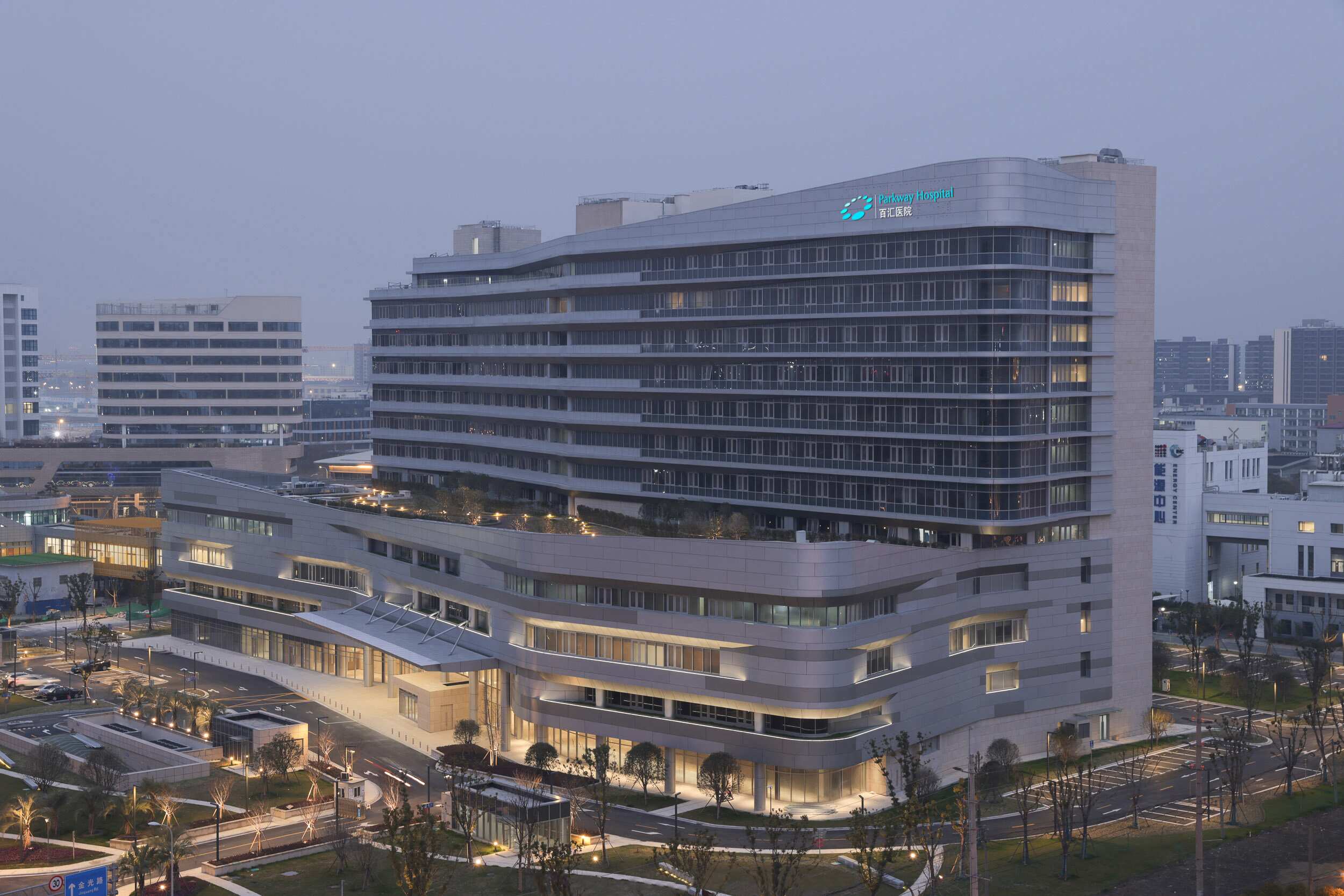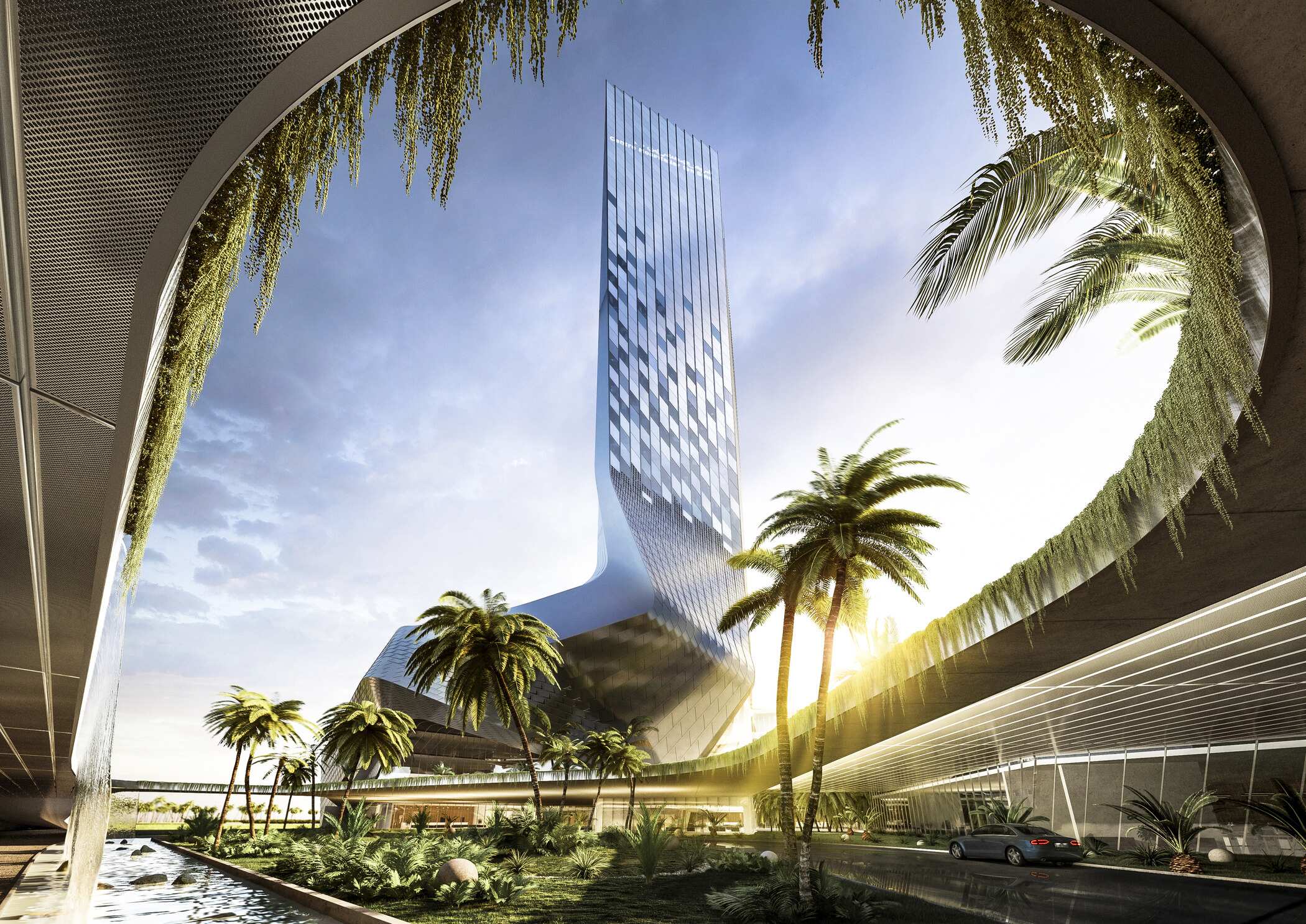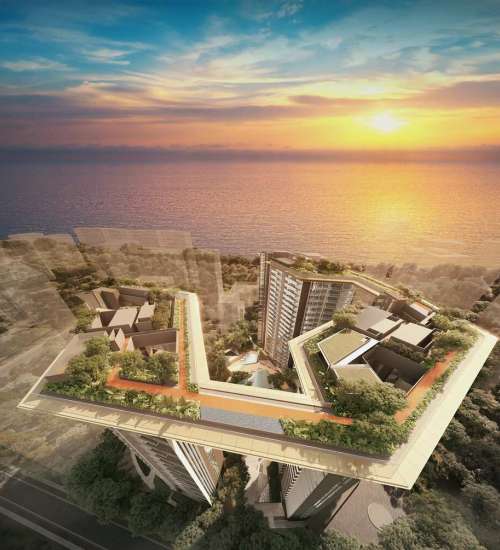Gordon Gn, the Office Director of HKS Singapore, has had extensive experience in architecture across Asia Pacific, the Middle East, North Africa, as well as American regions. He is passionate about placemaking and creating meaningful architecture, constantly pushing to develop creative, cutting-edge designs that enriches the community it’s in, as well as the people in it. He is also one of the first architects to practice computational design – a method that uses a combination of algorithms and parameters to address design problems with advanced computer processing.
Can you tell us more about the innovation that computational design brings to the architecture industry and why you decided to champion it?
Computational design enables us to improve project outcomes relating to the performance of projects. A digital model provides us with the means to test multiple scenarios through simulation, offering the ability to arrive at more optimal solutions across multiple criteria.
As a way of thinking, computational design allows us to utilize processes outside the norm – ones that involve algorithmic design, performance optimization, and automated documentation using a variety of programming languages. By leveraging emerging technologies and methodologies, it enables us to elevate modes of architectural design and production through simulation and analysis, digital fabrication, and visualization with the integration of VR and AR technologies.
Can you further explain how computational design manages to fill gaps in the region’s current architecture landscape? How does it differ from a more straightforward approach?
As a region, the design approach practiced by many design studios have gone beyond the days of manual sketching, with most practices using digital software for the design process. However, they are still fairly traditional as the digital modelling is a direct visual translation of what the designer has in mind.
The new methods of computational design opens up the possibilities of discovering unexpected novel designs through a generative manner, and navigate trade-offs between high-performing designs, their constraints, and parameters. This contrasts with the traditional manner, where form generation and co-design is by humans, then subsequently translated to computer. Such methodology introduces new ways to think, make, and produce architecture, streamlining workflow – allowing us to iterate rigorously and increase collaboration efforts between designers and clients, while unlocking the creative power of artificial intelligence for architects and engineers.
One example is the use of simulations to generate and analyze designs through a mathematical model that re-creates conditions in a virtual environment. There are many types of simulations we work on, such as occupancy, environmental, structural, and energy simulations. These techniques enable us to evaluate building performance prior to construction, which creates much more sustainable and efficient solutions.
(Related: Urban Living Redefined)
How is computational design used to create socially beneficial developments, as well as its impact on the design ecosystem?
While our contemporary environment is always changing, our professional obligations remain. As architects and designers of our environments, we face increasingly complex and interconnected challenges, which are different to those of our past.
In facing challenges of increasing complexity, our ability to solve for these problems can be amplified through our intentional use of complexity in our approach – and computational design offers a way to bring a broader range of diverse perspectives to the table. Working within a shared model, we enable the type of split-agency necessary for the problems of today and tomorrow – leveraging multiple perspectives for more resilient solutions.
When it comes to innovation and breaking barriers in architecture, what more can be done?Architects have always seen change as an opportunity. With the introduction of efficiency gains and automation brought about through the computational applications of the Building Information Modelling and Digital Twin processes, architecture has another opportunity to innovate in ensuring that we identify, quantify, and measure the performance of buildings across a designed lifespan for increased resiliency, lifespan, and durability.
Departures from conventional practice may not be received favorably by all audiences, but that is a small price to pay for innovation.
Are there any projects you’re working on that use computational design? Why should we be especially excited about it?
Our recently completed Parkway Shanghai Hospital for IHH Healthcare is an example of integrated computational design that utilized daylighting and solar heat gain simulations to derive the optimal form for building performance.
Another design for Rabat Ibn Sina Hospital in collaboration with our colleagues at HKS’ Laboratory for Intensive Exploration (LINE) utilizes forward-thinking digital design in façade optimization within its complex geometry.
Finally, Nustar Resort for Robinsonland in Cebu, Philippines recently opened its doors with an architectural design that went through rigorous simulation and analysis due to the variable climatic conditions within the region.








 ParkwayHealth Gleneagles Shanghai International Hospital
ParkwayHealth Gleneagles Shanghai International Hospital
 Rabat Ibn Sina Hospital
Rabat Ibn Sina Hospital




 Back
Back
